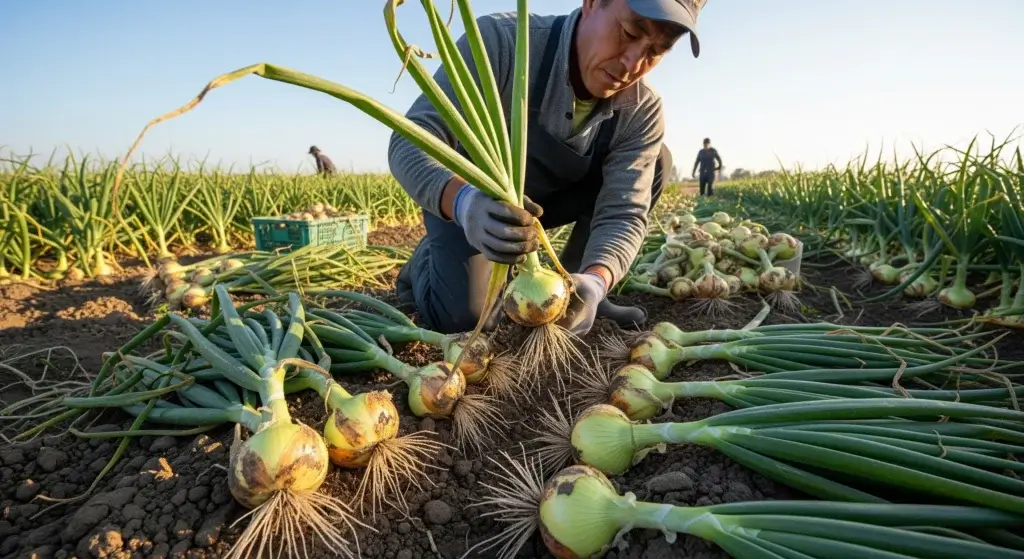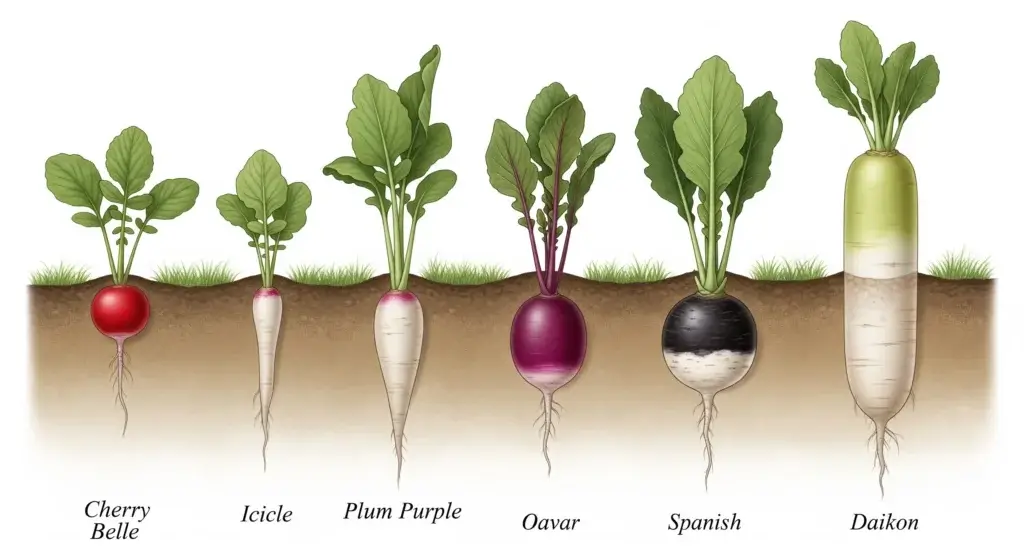
Broccoli is a nutrient-rich vegetable that many people enjoy at mealtime.
If you’re looking to grow healthy broccoli in your garden, it’s essential to understand the type of soil that best supports its growth.
Like all plants, broccoli has specific soil needs that help its roots develop and ensure the plant thrives.
In this guide, we’ll explore what kind of soil broccoli prefers, including the ideal soil type, pH levels, and nutrients it requires.
By following these tips, you’ll be well on your way to cultivating strong broccoli plants and enjoying a plentiful harvest.
Essential Soil Nutrients for Broccoli
Broccoli is a nutrient-hungry vegetable that thrives when provided with a rich supply of essential nutrients.
Understanding the key nutrients required by broccoli and how they contribute to its growth will help you tailor your soil to meet the plant’s specific needs.
Nitrogen (N)
Nitrogen is crucial for broccoli’s leafy growth.
It’s what gives the plant its vibrant green color and robust foliage, which are essential for photosynthesis.
A deficiency in nitrogen can lead to stunted growth and pale leaves.
To ensure your broccoli receives adequate nitrogen, consider incorporating nitrogen-rich fertilizers into the soil.
Organic options like compost, well-rotted manure, or blood meal are excellent choices.
These not only provide nitrogen but also improve soil structure and fertility.
- Read also: Don’t Drown It! The Perfect Watering Requirements For Broccoli
- Read also: Broccoli Bonanza: Unveiling the Best Time to Plant Broccoli

Phosphorus (P)
Phosphorus plays a critical role in the development of a strong and extensive root system.
Healthy roots are necessary for the plant to absorb water and nutrients from the soil, leading to better growth and higher yields.
A lack of phosphorus may result in slow growth, weak root development, and smaller broccoli heads.
The leaves may also take on a purplish tint, which is a classic sign of phosphorus deficiency.
To boost phosphorus levels, you can add bone meal, rock phosphate, or a balanced organic fertilizer to your soil.
Potassium (K)
Potassium is key to the overall hardiness and resilience of the broccoli plant.
It helps regulate water uptake, improves the plant’s tolerance to stress, and strengthens its immune system, making it more resistant to diseases and harsh weather conditions.
Potassium-deficient broccoli may show signs of weak stems and browning or scorching at the leaf edges.
The heads might be smaller or less firm than expected.
To enrich your soil with potassium, you can use wood ash, kelp meal, or potassium sulfate.
Calcium (Ca)
Calcium is essential for building strong cell walls, which are crucial for the structural integrity of the plant.
It helps prevent disorders such as tip burn (browning of leaf edges) and hollow stem, both of which can severely affect the quality of your broccoli.
A deficiency in calcium can lead to distorted leaves, stunted growth, and the development of hollow stems.
This not only impacts the plant’s appearance but also reduces its market value and nutritional quality.
To increase calcium levels in your soil, consider adding lime (calcium carbonate) or gypsum.
Both are excellent sources of calcium, though lime will also raise the soil’s pH, making it less acidic.
If your soil is already alkaline, gypsum is a better choice as it won’t affect the pH.
Boron (B)
Although needed in smaller quantities, boron is critical for healthy broccoli growth.
It aids in cell wall formation and helps regulate the plant’s growth and development processes.
Without sufficient boron, broccoli can suffer from several growth issues.
Boron deficiency can cause hollow stems, poor head formation, and the stems may become brittle.
You can add boron by applying borax in very small amounts or using fertilizers that include micronutrients.
Be cautious not to overapply, as too much boron can be toxic to plants.

Broccoli’s Ideal Soil Type
The success of your broccoli crop largely depends on the soil you use.
Broccoli has specific soil preferences that allow it to grow strong and healthy.
The key is to ensure that the soil is loose and well-drained, allowing broccoli roots to penetrate easily and access the nutrients they need.
Loamy soil
Loamy soil is often considered the best option for broccoli because it offers a balanced mix of sand, silt, and clay.
This combination creates a soil structure that supports optimal root growth.
The balanced texture of loamy soil ensures excellent drainage, which helps prevent water from pooling around the roots, reducing the risk of rot.
Loam soil retains enough moisture to keep the plants hydrated without becoming soggy.
The soil’s fertility is another advantage, as it typically contains a good amount of organic matter, providing essential nutrients that broccoli needs to thrive.
Loamy soil is easy to till and work with, making it a gardener’s favorite.
Its loose structure allows roots to penetrate deeply, giving the plant stability and access to nutrients.
While loam is the preferred choice, broccoli can also grow in other soil types such as sandy loam, clay, sand, and even chalky soil.
However, these soil types might require additional amendments or adjustments to achieve optimal growing conditions.
Sandy loam soil
Sandy loam is a soil type that leans more toward sand but still contains some silt and clay.
It’s known for its light texture and quick drainage.
Sandy loam is an excellent choice if you’re looking for soil that drains well.
Good drainage is vital for broccoli because it prevents waterlogging, which can cause root rot and other water-related issues.
However, because sandy loam doesn’t hold onto moisture as long as loamy soil, you may need to water your broccoli plants more frequently.
Sandy loam can sometimes lack the organic matter necessary for nutrient retention.
To improve sandy loam, consider adding compost or other organic material to boost its fertility and water-holding capacity.
Clay soil
Clay soil is dense and heavy, which can be problematic for broccoli.
It tends to hold water for extended periods, leading to poor drainage.
Excess water around the roots can suffocate them and promote diseases like root rot.
If you have clay soil, it’s crucial to amend it before planting broccoli.
One effective method is to add organic matter, such as compost, peat moss, or well-rotted manure.
These amendments help break up the dense clay, making the soil more porous and improving drainage.
Over time, these additions will also increase the soil’s nutrient content and promote healthier root development.
After amending clay soil, you should regularly check its condition, especially after heavy rains.

Soil pH Level for Optimal Growth
Soil pH is a measure of how acidic or alkaline the soil is, and it’s a critical factor in growing broccoli.
The right pH level ensures that the nutrients in the soil are available for the plant to absorb.
- Optimal pH range: Broccoli prefers a slightly acidic to neutral soil, with a pH range of 6.0 to 7.0. This range allows broccoli to access all the essential nutrients it needs.
- Adjusting soil pH: If your soil’s pH is too low (acidic), you can raise it by adding lime. On the other hand, if the pH is too high (alkaline), you can lower it by incorporating sulfur or organic materials like pine needles or peat moss.
Importance of Organic Matter in the Soil
Organic matter plays a vital role in soil health and is particularly important for broccoli.
It not only enriches the soil with nutrients but also improves its structure and water-holding capacity.
There are numerous organic materials you can add to your soil, here are some common options:
- Compost: Compost improves soil structure, making it easier for broccoli roots to grow and absorb nutrients. It also helps retain moisture, which is crucial for broccoli, especially during dry spells.
- Manure: Well-rotted manure is another excellent source of organic matter. Rich in nutrients, especially nitrogen. It provides a slow-release source of nutrients and helps improve soil texture. Be sure to use well-composted manure, as fresh manure can be too strong and may burn the plants.
- Cover crops: Growing cover crops like clover, rye, grasses, and brassicas can also boost organic matter in the soil. These crops add nutrients to the soil as they decompose, improving fertility for your next broccoli planting.
- Leaf mold: Decomposed leaves create a light, fluffy material. Excellent for improving soil structure and drainage.
- Peat moss: Highly absorbent and acidic. Used to improve soil structure and water retention. Not a renewable resource, so consider alternatives.
- Aged wood chips: Can improve soil structure but can tie up nitrogen initially. Best used in combination with nitrogen-rich materials.
- Kitchen scraps: Can be composted to create nutrient-rich soil amendment. Avoid meat and dairy products as they can attract pests.

- Read also: Extend Your Harvest: Tips for Growing Broccoli in Winter
- Read also: The Eggshell Hack: Eggshells as Fertilizer for Broccoli
Conclusion
To achieve a successful broccoli harvest, it’s important to understand and meet the soil requirements.
From maintaining the right nutrient balance and pH level to incorporating organic matter, each step is crucial to ensuring healthy, productive plants.
By following these guidelines, you’ll create the perfect environment for your broccoli to thrive, resulting in a bountiful and tasty harvest.
FAQs
Yes, but sandy soil drains quickly and may require more frequent watering and additional organic matter to retain moisture and nutrients.
It’s a good idea to test your soil’s pH at least once a year, preferably before planting, to ensure it’s within the optimal range for broccoli.



